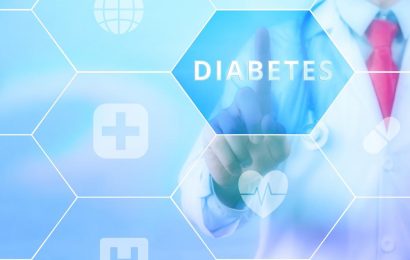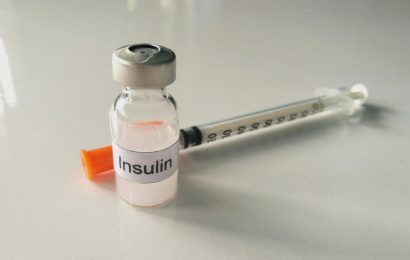A new study says that people newly diagnosed with Type 2 can do better if they are immediately started on a three-drug combo. Does this make sense to you? Is it good science or bad medicine?
Muhammad A. Abdul-Ghani, MD, from the University of Texas Health Science Center at San Antonio, presented the findings at the ADA Scientific Sessions in Chicago. The study enrolled 155 people with Type 2 diabetes. The average time after diabetes diagnosis was five months. None of them were taking diabetes medications at the beginning of the trial. Their average HbA1c was 8.6%.
Half the subjects got “conventional therapy.” They were started on metformin. If their fasting plasma glucose (FPG) went above 100 or their A1C went above 6.5%, they were given glyburide. That’s a sulfonylurea, a drug that pushes the pancreas to produce more insulin. Over a three-month period, if FPG or A1C crept up anyway, a basal insulin was added.
The other group started three drugs (“triple therapy”) right away. The drugs used were metformin, pioglitazone (brand name Actos), and exenatide (Byetta).
Subjects were seen in the clinic every three months, where their FPG, A1C, weight, and home glucose monitoring logs were recorded. Medications could be adjusted down for blood glucose levels of less than 60 mg in a day or symptoms of hypoglycemia (low blood glucose).
On the triple therapy drugs, most people were able to attain an average A1C of 6% and keep it there for two years or more. People in the conventional therapy were averaging an A1C of 6.6% after two years.
There were other advantages to the multi-drug approach. People receiving triple therapy lost an average of 2.6 pounds of weight, while those receiving conventional therapy gained weight. Hypoglycemia occurred in 46% of those in conventional treatment compared with 15% in triple therapy.
Dr. Abdul-Ghani hopes that a larger study might show a lower risk of microvascular complications in people on triple therapy. If it does, he said, starting those who are newly diagnosed on multiple drugs could become the new standard of practice.
Many experts find this report exciting news. Quoted on the Web site Diabetes in Control, Carol Wysham, MD, clinical associate professor of medicine at the University of Washington School of Medicine, Seattle, stated, “I’m very excited by this, by any concept that will help to spare beta cells and…will keep patients stable for longer.”
I’m not as enthusiastic. The long-term negative effects of triple therapy cannot be known yet. Actos has already been shown to increase the risk of heart failure.
Indeed, edema (swelling, often a sign of heart or kidney failure) has already occurred in 5.3% of the triple-therapy group in the first two years. Gastrointestinal side effects such as diarrhea occurred in 33% of the triple therapy group, compared to 21% in the conventional group.
I also wonder how researchers can know that starting three drugs at once made the A1C difference. They weren’t the same drugs the conventional group got. Of course the people receiving glyburide and insulin would get more hypoglycemia. Of course they gained weight. That’s what those drugs do. Of course people on Byetta would have slightly lower A1C levels. It’s just a better drug. That doesn’t mean people necessarily needed metformin, Actos, and Byetta all at once.
It also remains to be seen if lowering A1C through drugs makes a difference in people’s overall long-term health. It may just be improving lab numbers. We won’t know for years if this therapy makes a difference in rates of complications or death.
Radical change
Giving newly diagnosed people three drugs would certainly be a radical change. Current practice is usually to try diet and lifestyle before drugs, or sometimes diet and exercise after immediate short-term treatment to get a high A1C down.
If diet and exercise “don’t work,” defined as keeping the A1C below some number, usually 7% or 6.5% depending on the doctor, people usually are given metformin. Typically, that “works” for a while. When it no longer does, when numbers move up, this is called “treatment failure.” Doctors may add a sulfonylurea drug like glyburide, or some other pill, or insulin.
Some diabetes specialists have long been unhappy with this approach. Dr. Ralph De Fronzo, lead author on the Texas study, uses the analogy of breast cancer. Doctors don’t treat cancer with one drug and wait for it to fail, and then try something else. Diabetes should also be treated more aggressively, in his opinion.
But aggressive drug therapy can bring up another problem: People taking multiple drugs might be less likely to take life changes seriously. Some recommended diets may not be healthy for people with diabetes. And even if they are, people may not stay with them for various reasons. That’s why treatment “fails.”
If people receive more support in finding and maintaining the foods and physical activity (and sometimes medications, and sometimes relaxation) that are right for them, their diabetes can stabilize and even improve dramatically (see below). On the other hand, if they don’t eat foods that work for them, it’s doubtful that even three good drugs will make much long-term difference.
**
My new book, cowritten with Jim Healthy is out. Diabetes Heroes is about ordinary people reversing their Type 2 diabetes. (“Reverse” doesn’t mean cure, but it does mean being off medications with normal numbers.) A lot of inspiring stories like the ones we read here all the time.
You can get a free copy and see a moving video interview with one of the “heroes” here.




